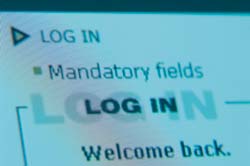The Last Word
Making the Move
- By Brent Dirks
- Oct 01, 2006
 JUST the thought of making the move from analog video security to an IP-based system can give even the best security manager worries. IP-based systems are becoming more mainstream, advancing security in many applications. And companies that have made the switch continue to be impressed with the new technology and its many benefits.
JUST the thought of making the move from analog video security to an IP-based system can give even the best security manager worries. IP-based systems are becoming more mainstream, advancing security in many applications. And companies that have made the switch continue to be impressed with the new technology and its many benefits.
Orlando Regional Healthcare (ORH) recently made the switch, and officials are happy enough with the system to make plans to emply to more than 500 IP-based cameras in the next three years.
A private, not-for-profit healthcare network, ORH has 1,572 beds spread across eight hospitals in the Orlando, Fla., area. And it soon began having to deal with the drawbacks of an aging analog-based security system.
The organization had advanced to analog DVRs had occurred, but it was still using numerous time-lapsed tape recorders.
The mix of technology led to a various number of standalone pieces with different degrees of documentation and utility for ORH. The organization was faced with having to work with proprietary pieces, and its hopes for interoperability were dashed.
The mix of technology led to a various number of standalone pieces with different degrees of documentation and utility for ORH. The organization was faced with having to work with proprietary pieces, and its hopes for interoperability were dashed.
"We expended an incredible effort to keep this running, with security staff changing tapes and different procedures everywhere," said John Hackett, director of protective services for ORH. "Much of this ran on 'tribal knowledge,' and when members of the tribe left, they took the knowledge with them."
Moreover, the quality of the imaging equipment was sub-par and unreliable for the organization.
"When there was an incident, scrolling through hour upon hour of footage was tremendously wasteful," Hackett said. "Finally, when we pinned down the video, it was often so poor that it was not worth looking at."
Jumping In
When the time came to add coverage for two garage facilities, another standalone DVR was needed. But, there was no room in the security office for the new equipment -- and the organization then began to examine its entire system.
After analyzing the enhancements IP technology could afford, Hackett said ORH officials made the decision to replace the existing analog system.
"We have struggled with separate security video operations in each of our facilities and discovered that with an IP-based system we could unify operations to improve efficiency, reliability and safety while cutting costs," he said.
And the transistion to IP required one very important asset: the IT department. And officials were pleased to find out that the IT department already used IP cameras in network closets to monitor equipment.
"Obtaining the IT department's buy in was crucial," said Diane Savikas, ORH project coordinator for biomedical/electronics. "They requested that a parallel network built on a separate, fiber-optic cable be installed so that this could scale to an enterprise-wide, IP security system supporting hundreds of cameras."
Instead of a gradual phase in, ORH officials saw that an investment in an IP-based system can deliver significant savings. Thirty-four Sony SNC-DF70N network cameras were installed in two garages, and 68 legacy analog cameras were carried over to the new system with the help of encoders.
Since ORH buildings were designed with IT in mind, it made installation and integration easier.
Data closets located throughout the buildings facilitated installation of the cameras and Cisco 3750 PoE switches. Power and data are both carried over the Ethernet line, eliminating the need for electrical outlets.
The cameras connect to a dedicated server running D3Data's network video management software, a browser-based NVR solution made for enterprise network security applications.
I.Comm, a Michigan-based VAR and system integrator designed and installed the system. The company, which worked with ORH previously on patient care and voice communications, was glad to help.
Seeing the Results
Since jumping into the IP world in January, the results have been clear for ORH.
With an exceptions-based rule set, images are only recorded when motion detectors trigger the camera -- a feature that came in handy when security investigated a report of tampering with a vending machine.
"With the old system, we'd have our work cut out for us reviewing hour after hour of video looking for an event," Hackett said. "Here, the situation was resolved quickly. I was able to scan through five days of video monitoring in a half-hour."
Other improvements with the systems were a pleasant surprise. The simplicity of viewing recordings uncovered holes in the physical plant that needed to be fixed. The system helped to uncover a faulty security door creating a shortcut for intruders.
Also, parking garage hours were changed after the system showed employees needed access earlier to the facility.
After making the jump into IP-based security systems, the hospital is confident of the improvements the new technology brings and that future growth is as easy as adding a camera to the network.
"We've made many positive changes because of the added awareness the system brings," Hackett said. "We have a far better sense of the facility now, so we guard it and manage it more efficiently."
This article originally appeared in the October 2006 issue of Security Products, pg. 125.